Phylum Chordata Scientific name Crax alector Rank Species | ||
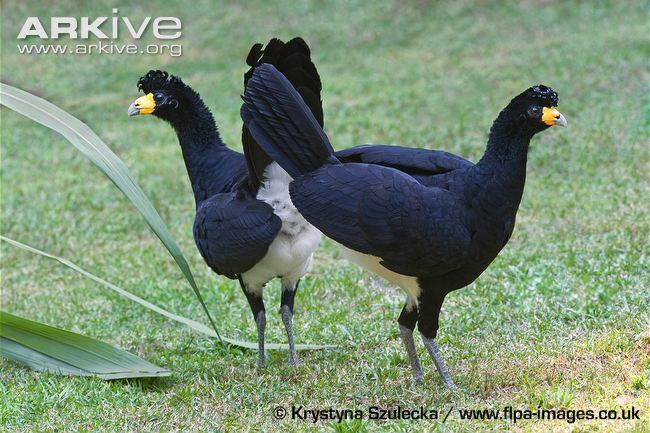 | ||
Similar Curassow, Crax, Bird, Cracidae, Yellow‑knobbed curassow | ||
Black curassow crax alector smooth billed curassow boom call amazonian birds
The black curassow (Crax alector), also known as the smooth-billed curassow and the crested curassow, is a species of bird in the Cracidae family, the chachalacas, guans, and curassows. It is found in humid forests in northern South America in Colombia, Venezuela, the Guianas and far northern Brazil. Introduced to Bahamas, Cuba, Jamaica, Haiti, Dominican Republic, Puerto Rico and Lesser Antilles. It is the only Crax curassow where the male and female cannot be separated by plumage, as both are essentially black with a white crissum (the area around the cloaca), and have a yellow (eastern part of its range) or orange-red (western part of its range) cere.
Contents
- Black curassow crax alector smooth billed curassow boom call amazonian birds
- Black curassow crax alector smooth billed curassow boom call curassow
- Taxonomy
- Description
- Behaviour
- Status
- References
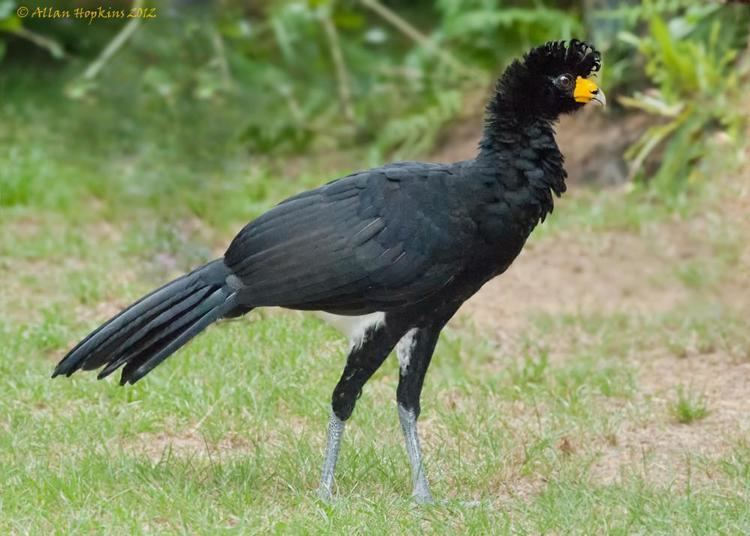
Black curassow crax alector smooth billed curassow boom call curassow
Taxonomy
There are two recognized subspecies:
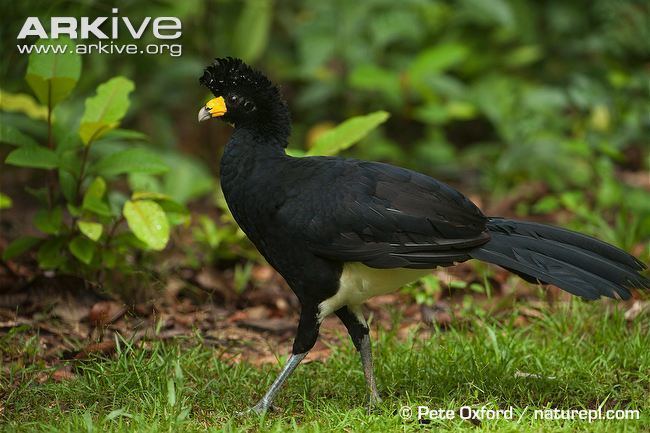
Description
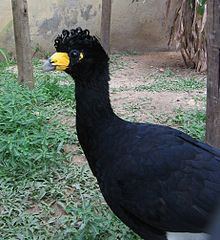
The black curassow is a large bird reaching about 900 millimetres (35 in) in length. The male has black upper parts glossed with a purplish sheen and an inconsricuous black crest. The skin at the base of the grey beak is yellow or orange but there are no knobs and wattles. The underparts are white. The female is similar but the crest is barred with white, and the juvenile is black, barred and mottled with reddish-brown and reddish-buff.
Behaviour
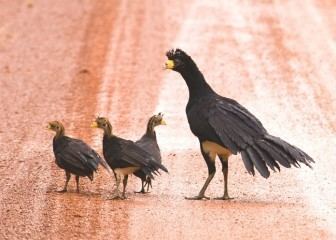
The black curassow is a largely ground-dwelling bird. It lives in the undergrowth in lowland forests and plantations and in riverside thickets. It mostly eats fruit, but also consumes buds, shoots, leaves, flowers, fungi and invertebrates. It nests a few meters above the ground in trees, the nest being a platform of sticks. Breeding takes place in the rainy season in Suriname while in French Guiana, young are reported in March and September.
Status
Although the black curassow is fairly common, populations have been declining because of habitat loss, trapping and hunting. These threats are likely to continue, and the International Union for Conservation of Nature rates the bird's conservation status as "vulnerable".
